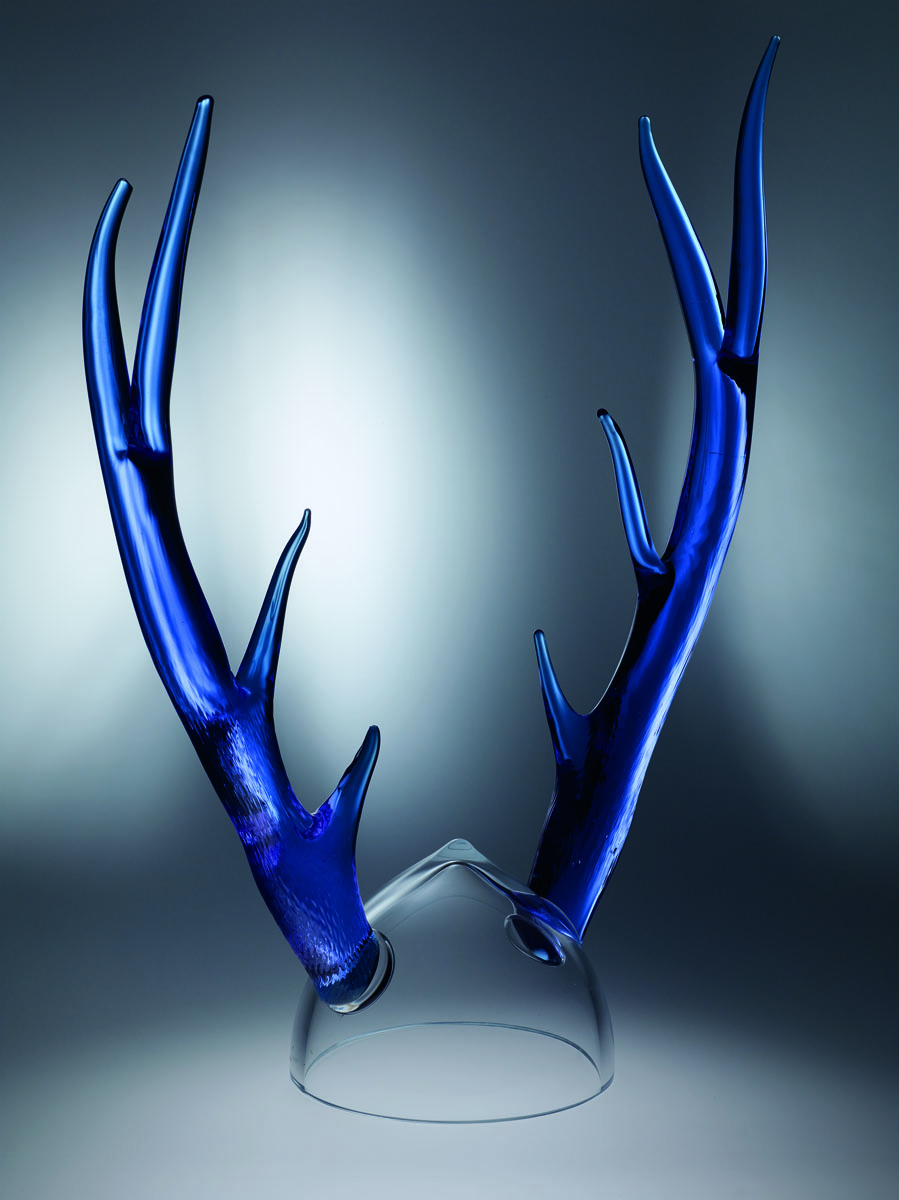Put your helmet on

Willem Noyons’s glass helmets neither protect nor convey status. The significance of these sculptural helmets is purely artistic and symbolic: fascinating archaic forms in a new, surprising material.
Fotografie Petra & Erik Hesmerg
Tags glasshelmetsculpture
Disciplines glassdesignsculptureglas
2019
Glass
Put your helmet on
Some shapes are so natural and so right that they endure for centuries without changing in any fundamental way. The wheel is a case in point, as are tools of all kinds, weapons, clothes—and the helmet. Although millennia separate them, the helmet Homer gave his hero Odysseus—a helmet made of leather, without crest or plume, what people call a skull-cap, to protect the heads of brave young men—is essentially much the same as the one that astronaut Major Tom had to put on before he was launched by David Bowie in 1969, the year of the first moon landing. We encounter helmets in virtually every age and culture, and the word ‘helmet’ itself has an almost as venerable history and spread. It is the diminutive of the Old English ‘helm’, which in turn derives from the Proto-Germanic ‘helmaz’ (meaning ‘protective covering’). Little changed, that etymon found its way into many European languages: Helm, helm, helme, heaume, hjalmr, hjälm, hilms; helma, elmo, yelmo…
While the earliest helmets served solely to protect the most vulnerable part of the bodies of ‘brave young men’, it was not long before such valuable headgear also conveyed status on their wearers. Before Odysseus put his helmet on it had already belonged to a series of illustrious warriors, Amyntor, Autolycus, Amphidamas, Molus and his son Meriones among them; they added lustre to the helmet that reflected on its wearer. Odysseus’s ‘heirloom’ was made of leather and decorated with boar’s teeth. They may have helped to deflect the blows of a sword in battle, but they were certainly intended to intimidate opponents and lend the wearer the symbolic strength of a wild boar. It is striking that the decorations on warriors’ helmets were, without fail, animal relics of all kinds: horsehair plumes, the tips of bull’s horns, antlers or feathers (for instance the wings on the flying god Mercury’s helmet). They undoubtedly made the warrior stronger and more impressive, but also less agile in battle. The chief significance of these decorations—crests—was consequently as symbols of power, and they live on in heraldry to the present day as the hallmark of a knightly descent.
Willem Noyons’s glass helmets neither protect nor convey status. The significance of these sculptural helmets is purely artistic and symbolic: fascinating archaic forms in a new, surprising material. Not high-flown chivalric symbolism, but the display of the glass-blower’s bravura. True, Noyons’s helmets repeat age-old shapes and often sport traditional crests, but the pristine, brittle glass from which they are made immediately creates an uneasy contradiction: that of the fragile material versus the helmet’s original protective function. And all sorts of details in some of the works in this collection compel us to reflect on war and its consequences: the physical injuries and mental trauma, the scars that persist in soldiers’ heads long after they have taken their helmets off. Is the craquelure in the glass the incessant echo of a hard blow? Why has a bullet sought its way through a hole splaying outward, from the inside to the outside, straight through the side of the helmet? Are the rough, sharp chunks of glass on the inside of the helmets piercing memories of the violence of war? These are cruel details that cast a pall of sadness over the beauty and indomitable transparency of these glass sculptures, something personal and vulnerable. As vulnerable as humankind itself.
prof. dr. F.T. Scholten
Senior curator of Sculpture
Rijksmuseum